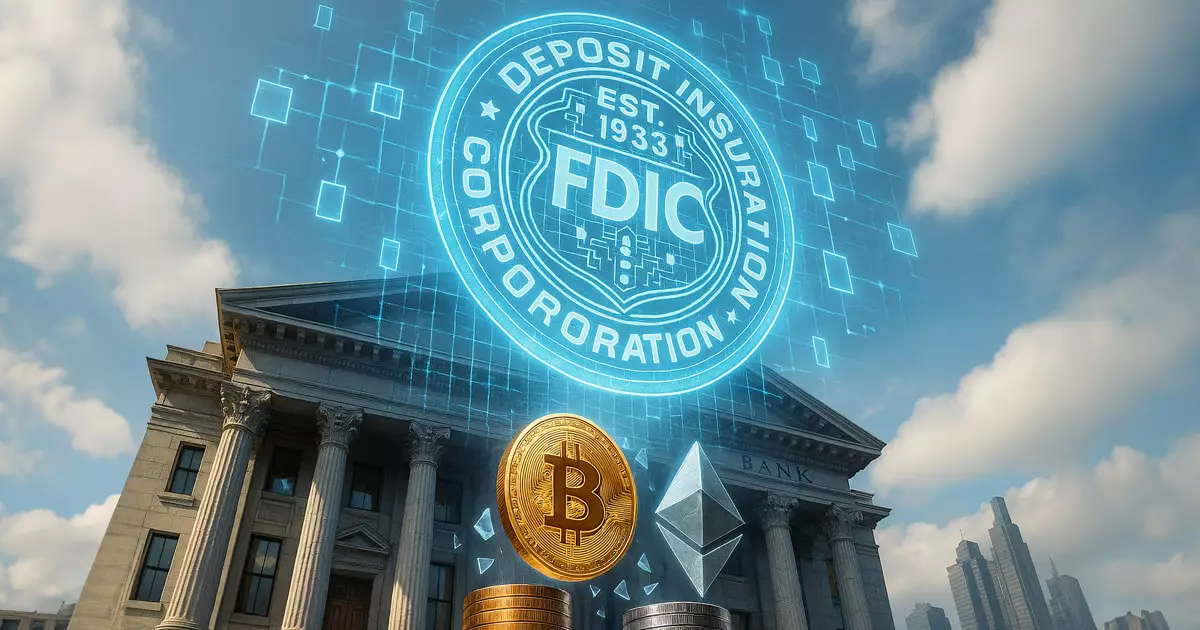The recent announcements by the Federal Deposit Insurance Corporation (FDIC) regarding its evolving framework for the integration of cryptocurrency into banking practices represent a tectonic shift in the financial landscape. The FDIC has decided to open doors to U.S. banks engaging with public, permissionless blockchains, a move that could have profound implications. Though it may sound like a progressive welcome to innovation, it’s essential to approach this new development with cautious optimism. As attracted as we are to the shine of blockchain potential, the realities and inherent risks of cryptocurrency must be scrutinized deeply.
The Shift in Regulatory Posture
Acting Chairman Travis Hill’s remarks point to a momentous transition in the regulatory environment, as the FDIC acknowledges that an outright prohibition on public blockchains is restrictive. While the move is commendable for fostering innovation, it also raises eyebrows regarding the sufficiency of the existing regulatory guardrails. Regulations that encourage innovation without compromising safety standards are a fine balance to uphold. Hill’s acknowledgment of foreign jurisdictions embracing public blockchains raises pertinent questions about our domestic regulatory lag—are we playing catch-up in an area where caution might lead to stagnation?
Risk Management on the Cutting Edge
A key area of focus in the FDIC’s new guidelines is the evaluation of risk management practices associated with crypto activities. Banks are to be entrusted with greater freedom to navigate this uncharted territory, and while one cannot deny the potential profitability that comes with such innovation, the risk management frameworks in place need to be robust. The FDIC’s emphasis on ‘appropriate guardrails’ feels insufficient amidst the backdrop of an ever-evolving digital asset marketplace. If history has taught us anything, it is that in financial markets, where innovation often outpaces regulation, risk can spiral out of control quickly, leading to systemic destabilization.
Stablecoins and Regulatory Ambiguity
The matter of stablecoins adds layers of complexity to an already intricate framework. While Hill mentions reevaluating pass-through deposit insurance regulations for stablecoin reserves, one can’t help but wonder: how can we assure financial stability amidst such ambiguity? The reality is that stablecoins, touted for their potential to bring stability to the crypto landscape, could just as easily morph into a tool for financial engineering that eludes regulatory scrutiny—especially if guidelines are not clear and precise. The absence of a decisive and transparent approach could embolden illicit activities, further endangering the financial ecosystem.
Tokenization’s Uncharted Waters
Discussing tokenized real-world assets, Hill stated unequivocally, “deposits are deposits, regardless of the technology deployed.” While the sentiment resonates with a tech-first approach, it fails to address some crucial operational challenges. If individuals’ access to their funds can be automated via smart contracts, does that risk circumventing traditional safeguards designed to manage bank failures? This question should not remain unanswered, as the implications for depositor rights and systemic risk during periods of crisis need to be examined closely.
A Call for Honest Discourse
In an era where technology can redefine traditional frameworks, the FDIC’s revised stance raises critical questions not just about what is allowed but about what constitutes responsible governance in this burgeoning sector. The agency seems poised to step forward in an innovative atmosphere, but a sense of transparent dialogue and regulatory introspection is crucial. The relevance of the existing measures must not be undermined, nor should we neglect the necessary balance between progress and prudence.
The FDIC’s move to embrace a more permissive stance on cryptocurrency represents a significant opportunity for innovation. However, the risks tied to this new paradigm are considerable. By prioritizing accountability, transparency, and responsibility, regulators can truly create an environment conducive for growth, rather than inadvertently fostering chaos amidst the exhilarating potential of blockchain technology. The road ahead is paved with uncertainty, and it is this careful navigation that will define the future of crypto in banking.

